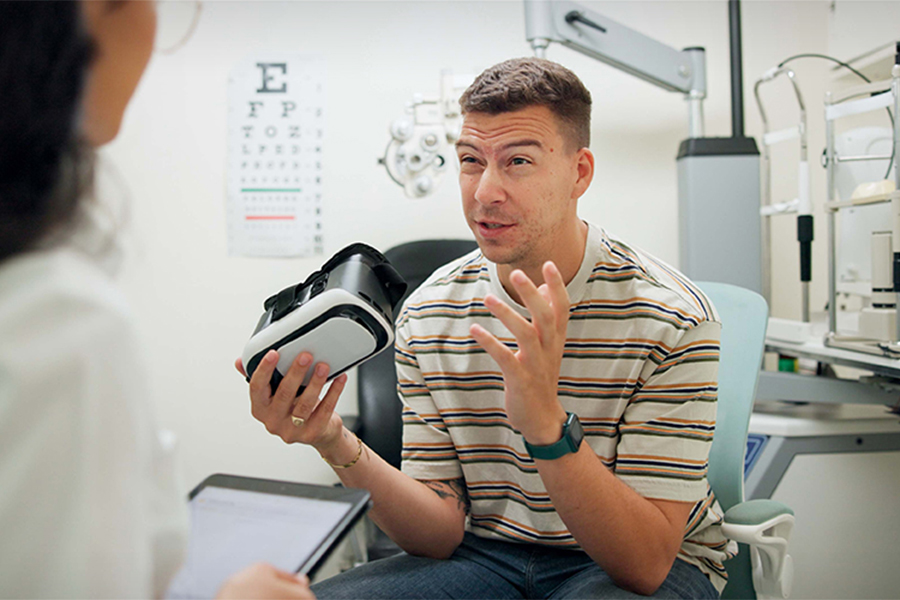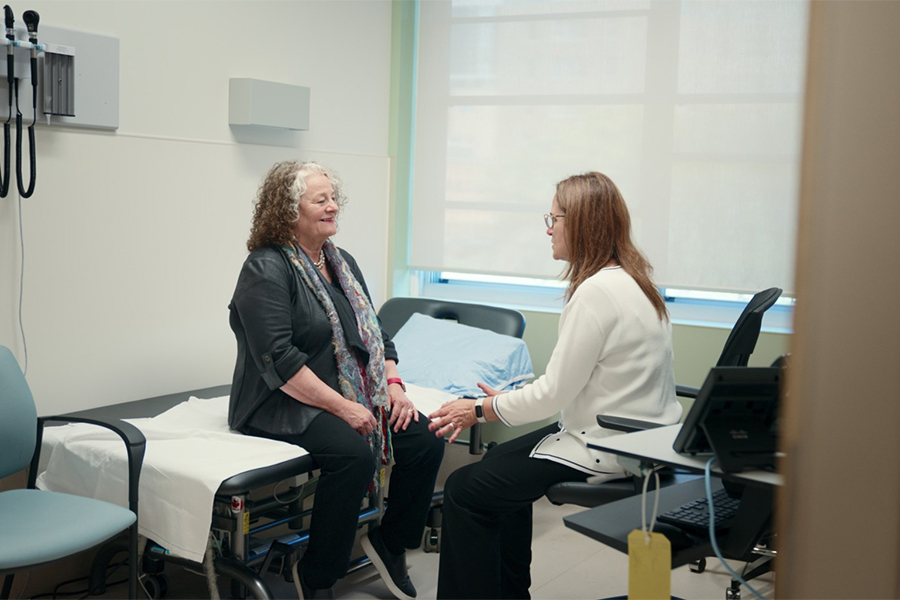Dr. Robin Green, (L), is a Senior Scientist at UHN’s KITE Research Institute and a professor in the Department of Psychiatry at the University of Toronto. Isis So is a current MD-PhD student at Western University and a former Master of Science student in Dr. Green’s research group. (Photo: UHN StRIDe Team)
Recent findings from UHN’s KITE Research Institute provide a detailed view into how the brain changes after moderate to severe traumatic brain injury over the long-term.
The research team measured brain connectivity – the connections between different brain regions – from five months to several years in individuals who experienced brain injury.
The team found connectivity increases initially, but only to a point. At around one-and-a-half years after injury, the brain seems to reverse course and lose connectivity, suggesting a decline in brain function.
“Our findings support growing evidence that moderate to severe brain injury – over the long-term – can lead to behavioural declines and loss of brain function,” says Isis So, the first author and a former graduate student in the lab of KITE Senior Scientist Dr. Robin Green, who is also professor in the Department of Psychiatry at the University of Toronto (U of T).
The research team followed the recovery of 40 adults who experienced brain injury. The team took brain scans of these individuals at different times – at half-a-year, at one to one-and-a-half years, and at three years or more after injury.
Functional magnetic resonance imaging (fMRI) was used to measure brain connections in two brain networks – the frontoparietal network and the default mode network. These networks were chosen because they are involved in higher brain functions such as short-term memory.

“Few studies have measured brain connectivity and recovery over longer time points in people with moderate-severe traumatic brain injury,” says Dr. Green, the senior author of the study who is also an associate member at U of T’s Rehabilitation Sciences Institute, Program in Neurosciences, Institute of Medical Sciences, and Graduate Department of Psychological Clinical Science (U of T Scarborough).
“Our study is one of the first to measure brain connectivity changes beyond six months post-injury. “Combined with our previous findings, the current findings suggest that the brain is not static in the chronic stages of injury, contrary to previous assumptions,” Dr. Green adds. “Moreover, the findings indicate that both reparative and deteriorative neural mechanisms are operating in the first few years of injury, but that in the later chronic stages, the deteriorative mechanisms predominate.”
“By identifying that there are factors at play that are causing cognitive decline, and studying what causes or exacerbates them, we can explore potential therapeutic strategies. This could greatly improve the lives of individuals that experience brain injury.”
This study was supported by generous donors to UHN Foundation.


